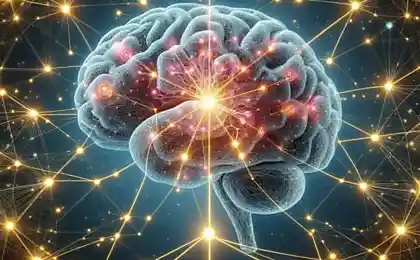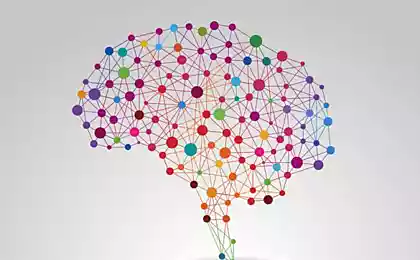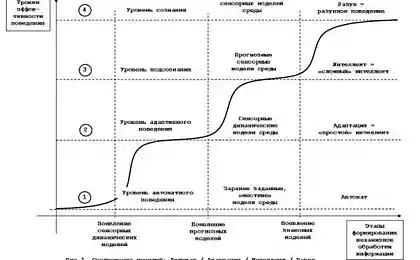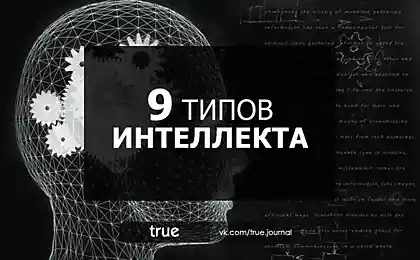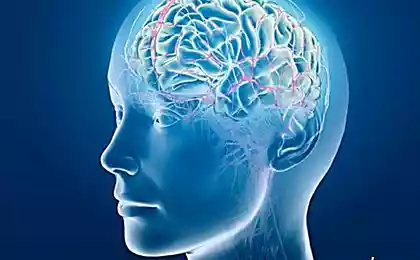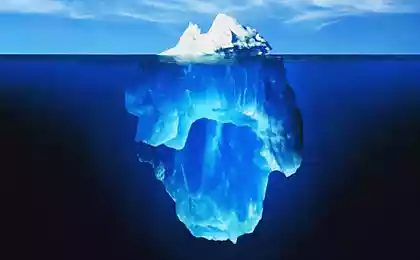764
Intelligence theory: is it possible to measure mental ability
The topic of intelligence is one of the most controversial and ambiguous in psychology: among scientists there is no consensus even about its General definition. What particular ability or combination of different talents? Paul Kleinman, author of "Psychology. People, concepts and experiments," recalls the basic theory, classification and tests related to IQ. Publish an excerpt from the book.
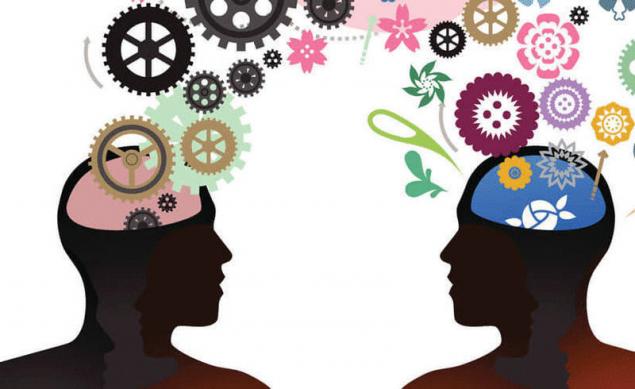
For the most part, psychologists agree that intelligence is the ability to think logically and rationally, solve problems, understand social norms, traditions and values, analyze the situation, learn from their experiences and to overcome life's difficulties. But they still can't decide whether it is possible to accurately assess the intelligence. To solve this problem scientists are trying to answer the following questions:
General intelligence British psychologist Charles Spearman proposed two-factor theory of intelligence, according to which the structure of intelligence can be divided into two factors: g-factor, that is common, or General, ability, and s-factor, or specific to a particular mental activity. Thus, according to the scientist, there is a General intelligence that determines our mental abilities in General or g-factor; and it can be accurately measured by a special test. Spearman found that people who performed well on one cognitive test, also successfully passed the other tests of mental abilities, and those who scored low points on one test did not succeed, and upon delivery of the other. Based on this, the psychologist concluded that intelligence is a General cognitive ability that can be measured and quantified.
Primary intellectual abilities According to psychologist Louis Thurstone, there are seven "primary intellectual abilities" that define human intelligence: verbal comprehension, verbal fluency, numerical, inductive and spatial perception, perceptual speed and associative memory.
Multiple intelligences the theory of multiple intelligences proposed by psychologist Howard Gardner, intelligence to evaluate quantitatively impossible. The scientist claimed that there are eight different types of intelligence based on relatively independent abilities and skills, and that some of these abilities can be developed in an individual is better than others. He initially identified seven independent types of intelligence: spatial (ability to perceive visual and spatial information), verbal (speech ability), logical-mathematical (the ability to logically analyze the problem, to recognize relationships between objects, and think logically), bodily-kinesthetic (the ability to move and exercise physical control over one's own body), musical (the ability to perceive pitch, rhythm and timbre of a sound and manipulate sound patterns), interpersonal (ability to understand other people and interact with them) and intrapersonal (the ability to recognize your own feelings, emotions and motives). Subsequently, the scientist had included in his model and naturalistic intelligence — a person's ability to live in harmony with nature, to explore the environment, to learn from other species.
Tzarichanka theory of intelligence theory of intelligence psychologist Robert Sternberg, there are three different factor of intelligence: analytical, or component (the ability to solve problems), creative, or experienced (the ability to cope with new situations using past experiences and existing skills), and practical or contextual (the ability to adapt to environmental changes).
Tests assessment of intelligence assessment Methods the level of intellectual development created today, no less than theories of intelligence. Since the creation of the first tools for measurement and assessment of intelligence became more precise and standardized. List them in chronological order.
Test Binet — Simon (1905) In 1885, the government of France suggested that the French psychologist Alfred Binet to develop a test to assess the level of intellectual development of children. The country just passed laws requiring all children aged six to fourteen to attend school, and therefore needed a test for screening those who were in need of special education. Binet and his colleague Theodore Simon made a number of questions on topics not directly associated with the school. In addition to various other abilities, they evaluated memory, attention and ability to solve problems. Binet found that some children respond to more complex questions, more suitable for an older age, whereas their peers were able to answer only the questions designed for younger children. Based on his observations, Binet developed the concept of mental age — a tool for assessing intelligence based on the average abilities of children of a certain age group. The scale Binet — Simon was the first test of intelligence was the basis for all tests in use today.
Intelligence test Stanford — Binet (1916) once on the scale Binet — Simon learned in USA, a psychologist at Stanford University, Lewis Terman standardized it and started to use for testing of American children. Adapted version titled "Scale of intelligence Stanford — Binet" was published in 1916. This test uses a single score — the intelligence quotient (IQ — intelligence quotient), which is calculated by dividing mental age test on his actual age and then multiplying the resulting number by 100.
Army alpha and beta tests (1917) With the beginning of the First world war, the US army there is a need in the assessment of mental abilities of a huge number of recruits. To address this challenge, the psychologist Robert Yerkes (then President of the American psychological Association and the Chairman of the Committee on psychological examination of recruits) has developed two tests, called "Army alpha test" and "Army beta test". They were more than two million people; so the army personnel service determines which tasks can be assigned to recruit and what position he is able to take.
Scale of intelligence David Wechsler (1955) In 1955, the psychologist David Wechsler developed another test for assessment of the level of intellectual development — the Scale of intelligence Wechsler adult. He was subsequently modified and is currently used modified third option.
If in the test the Stanford — Binet intelligence level is calculated on the basis of mental and real age of man, that when testing on a Scale of intelligence Wechsler adult test score compares with those of other people of his age group. The average is 100. Today this tool is considered the standard method of testing intellectual development.published
P. S. And remember, just changing your mind — together we change the world! ©
Source: theoryandpractice.ru

For the most part, psychologists agree that intelligence is the ability to think logically and rationally, solve problems, understand social norms, traditions and values, analyze the situation, learn from their experiences and to overcome life's difficulties. But they still can't decide whether it is possible to accurately assess the intelligence. To solve this problem scientists are trying to answer the following questions:
- Transmitted intelligence is inherited?
- Affect whether the intelligence is external factors?
- Is intelligence a number of skills and abilities or any one specific ability?
- Should I consider IQ tests (tests for intelligence quotient) biased?
- Can I use these tests to assess intelligence?
General intelligence British psychologist Charles Spearman proposed two-factor theory of intelligence, according to which the structure of intelligence can be divided into two factors: g-factor, that is common, or General, ability, and s-factor, or specific to a particular mental activity. Thus, according to the scientist, there is a General intelligence that determines our mental abilities in General or g-factor; and it can be accurately measured by a special test. Spearman found that people who performed well on one cognitive test, also successfully passed the other tests of mental abilities, and those who scored low points on one test did not succeed, and upon delivery of the other. Based on this, the psychologist concluded that intelligence is a General cognitive ability that can be measured and quantified.
Primary intellectual abilities According to psychologist Louis Thurstone, there are seven "primary intellectual abilities" that define human intelligence: verbal comprehension, verbal fluency, numerical, inductive and spatial perception, perceptual speed and associative memory.
Multiple intelligences the theory of multiple intelligences proposed by psychologist Howard Gardner, intelligence to evaluate quantitatively impossible. The scientist claimed that there are eight different types of intelligence based on relatively independent abilities and skills, and that some of these abilities can be developed in an individual is better than others. He initially identified seven independent types of intelligence: spatial (ability to perceive visual and spatial information), verbal (speech ability), logical-mathematical (the ability to logically analyze the problem, to recognize relationships between objects, and think logically), bodily-kinesthetic (the ability to move and exercise physical control over one's own body), musical (the ability to perceive pitch, rhythm and timbre of a sound and manipulate sound patterns), interpersonal (ability to understand other people and interact with them) and intrapersonal (the ability to recognize your own feelings, emotions and motives). Subsequently, the scientist had included in his model and naturalistic intelligence — a person's ability to live in harmony with nature, to explore the environment, to learn from other species.
Tzarichanka theory of intelligence theory of intelligence psychologist Robert Sternberg, there are three different factor of intelligence: analytical, or component (the ability to solve problems), creative, or experienced (the ability to cope with new situations using past experiences and existing skills), and practical or contextual (the ability to adapt to environmental changes).
Tests assessment of intelligence assessment Methods the level of intellectual development created today, no less than theories of intelligence. Since the creation of the first tools for measurement and assessment of intelligence became more precise and standardized. List them in chronological order.
Test Binet — Simon (1905) In 1885, the government of France suggested that the French psychologist Alfred Binet to develop a test to assess the level of intellectual development of children. The country just passed laws requiring all children aged six to fourteen to attend school, and therefore needed a test for screening those who were in need of special education. Binet and his colleague Theodore Simon made a number of questions on topics not directly associated with the school. In addition to various other abilities, they evaluated memory, attention and ability to solve problems. Binet found that some children respond to more complex questions, more suitable for an older age, whereas their peers were able to answer only the questions designed for younger children. Based on his observations, Binet developed the concept of mental age — a tool for assessing intelligence based on the average abilities of children of a certain age group. The scale Binet — Simon was the first test of intelligence was the basis for all tests in use today.
Intelligence test Stanford — Binet (1916) once on the scale Binet — Simon learned in USA, a psychologist at Stanford University, Lewis Terman standardized it and started to use for testing of American children. Adapted version titled "Scale of intelligence Stanford — Binet" was published in 1916. This test uses a single score — the intelligence quotient (IQ — intelligence quotient), which is calculated by dividing mental age test on his actual age and then multiplying the resulting number by 100.
Army alpha and beta tests (1917) With the beginning of the First world war, the US army there is a need in the assessment of mental abilities of a huge number of recruits. To address this challenge, the psychologist Robert Yerkes (then President of the American psychological Association and the Chairman of the Committee on psychological examination of recruits) has developed two tests, called "Army alpha test" and "Army beta test". They were more than two million people; so the army personnel service determines which tasks can be assigned to recruit and what position he is able to take.
Scale of intelligence David Wechsler (1955) In 1955, the psychologist David Wechsler developed another test for assessment of the level of intellectual development — the Scale of intelligence Wechsler adult. He was subsequently modified and is currently used modified third option.
If in the test the Stanford — Binet intelligence level is calculated on the basis of mental and real age of man, that when testing on a Scale of intelligence Wechsler adult test score compares with those of other people of his age group. The average is 100. Today this tool is considered the standard method of testing intellectual development.published
P. S. And remember, just changing your mind — together we change the world! ©
Source: theoryandpractice.ru
Habitat: why on the planet five populated continents
How to grow sweet grapes of the South to the North without a greenhouse
